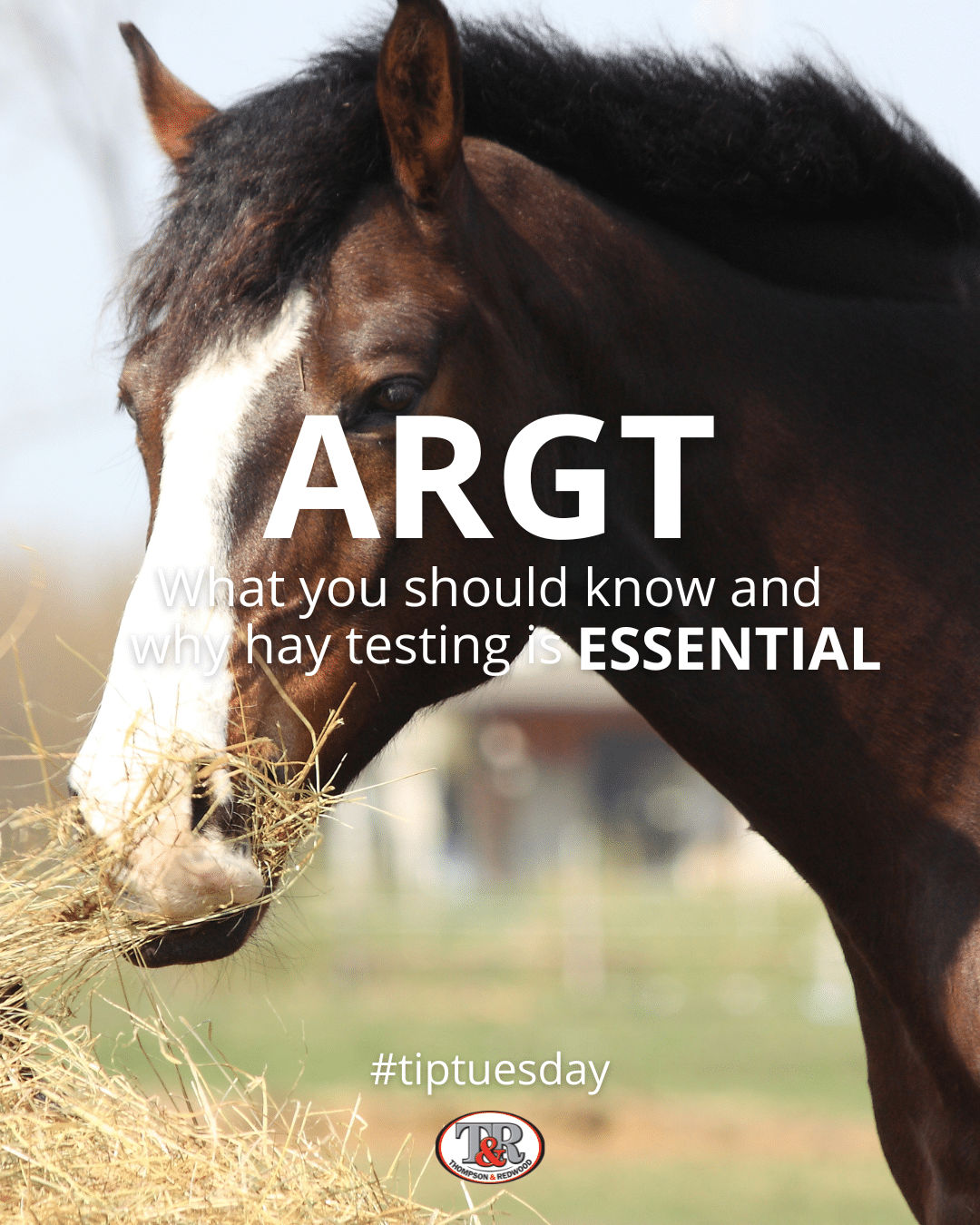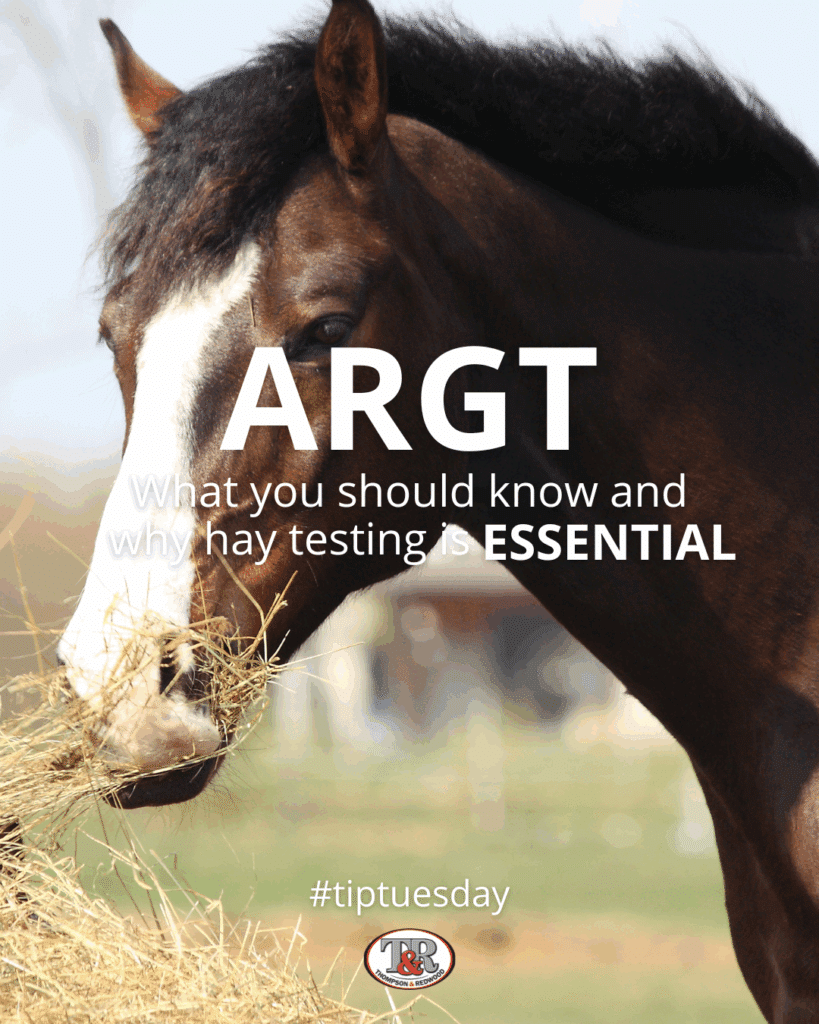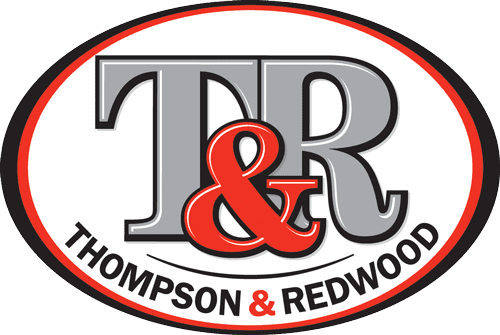
09 Jul Annual Ryegrass Toxicity in Horses (ARGT)
Unfortunately, there have been a number of horses impacted by Annual Ryegrass Toxicity (or ARGT) this year. Understanding what ARGT is and where it comes from is vital for WA horse owners to manage the risks.
What is ARGT?
ARGT is a very serious condition that occurs when a horses and livestock consume Annual Ryegrass that is infected by the Rathayibacter toxicus bacteria. The problem isn’t caused by the ryegrass itself but the nasty toxin that’s produced as a result of the infection.
How does the grass become infected?
The bacteria hitch a ride with tiny nematodes (a type of worm) which target and takeover the young, growing flowers and seedheads, replacing them with galls. The bacteria can be introduced to a paddock by the nematodes, or it may be present already in the soil.

The galls are the perfect environment for the bacteria, which then multiply and produce a toxin (corynetoxin) within the seedhead, which is transferred to the animal when eaten.
Unfortunately, ryegrass that has been infected will remain toxic even after the grass has dried off and been cut, meaning that hay cut from it will be toxic too.
How does the animal become infected?
Any grazing animals, from horses through to sheep and even pigs are susceptible to ARGT, when they eat infected pasture or hay.
The toxins have a cumulative effect. This means that the more the animal eats, the more it will affect them. Even if they have breaks between consumption for up to 9 weeks, the toxin can still accumulate.
Clinical signs of ARGT can show as early as 4 days post-introduction to infected feed but can also take weeks to develop.
What are the symptoms?
The toxin that causes ARGT impacts the central nervous system, and symptoms can be quite severe and quick to show. Symptoms include:
- Staggering or wobbling
- Disoriented
- Muscle tremors
- Seizures
- Hyper-reactivity
- Sudden death
Stress and activity from moving paddocks, exercise or travel can bring on or increase the symptoms.
Impacted horses can be at risk of sudden death 7-10 days from development of clinical signs. While some may recover, others may be left with permanent issues.
What should you do?
If something isn’t looking right, consult your vet straight away! Due to the neurological symptoms, ARGT horses can be extremely dangerous to handle, so you need to be very careful and get veterinary help as soon as you can.
While there isn’t specific treatment, vets can help to manage symptoms.
How can you prevent it?
You must only feed hay that has been tested as ARGT FREE. These certificates must be current, and for the specific batch you are buying hay from. Unfortunately, this does not always guarantee that there isn’t a roll within a batch from a supplier that may be carrying the toxin.
Buy from reputable hay producers, that have got good biosecurity practices and ARGT testing records.
If you are concerned about your own paddocks, you can test ryegrass pastures for the bacteria and manage it from there.
If horses become affected by ARGT, do NOT continue to feed the hay they were eating, and make sure it has been removed from the paddocks and disposed of so it isn’t accessible or allowed to sit in the paddock.
Be careful moving any contaminated hay or seed, as the infected galls are light and can be spread by strong winds and run-off water.
If you need to, reach out for help from the DPIRD.
Reference:
DPIRD: Annual Ryegrass Toxicity in Livestock
Read more: Annual ryegrass toxicity in livestock



No Comments